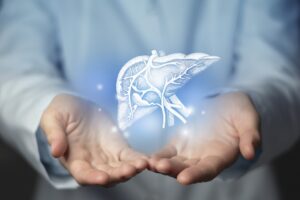
But now there may be another way. New research shows that exercise may help reduce fat around the liver, potentially making a healthier liver more accessible to millions of people with non-alcoholic fatty liver disease (NAFLD).
NAFLD can be quite dangerous to long-term health. Liver fat can cause inflammation and scarring, leading to liver fibrosis, cirrhosis, and end-stage liver disease. There is no cure for these conditions except for limiting liver fat storage.
A new study shows that about 150 minutes per week of moderate-intensity exercise – the exact amount recommended by public health experts – can significantly reduce liver fat in people with NAFLD.
For the study, researchers considered a 30 percent reduction in lover fat – measure by MRI scans, to be a meaningful improvement. They also reviewed 14 randomized controlled trials, so the work included a total of 551 participants.
The researchers found that exercise was 3.5 times more likely to achieve this 30 percent reduction in liver fat independent of weight loss compared to standard care.
They then found the optimal dose of exercise, learning that 39 percent of patients who exercised briskly for 150 minutes per week or more achieved a greater treatment response than 26 percent who exercised less.
Moderate exercise would be a brisk walk where you might start getting sweaty but can still converse with a walking partner. Light cycling is another example.
If you’ve got NAFLD or would like to give yourself a better chance at preventing it, start moving more. Don’t get caught up on all the numbers. Focus on making exercise a part of your daily routine.
The more physical activity you’re getting, the better, even if it doesn’t lead to weight loss.